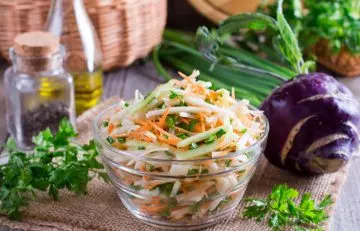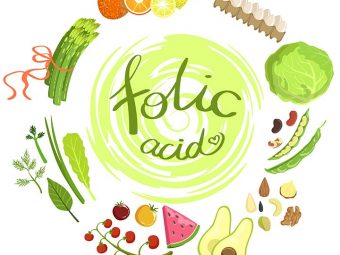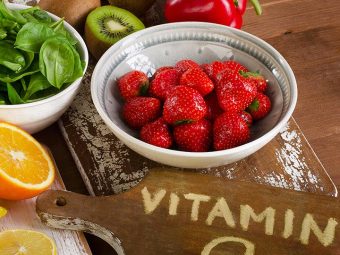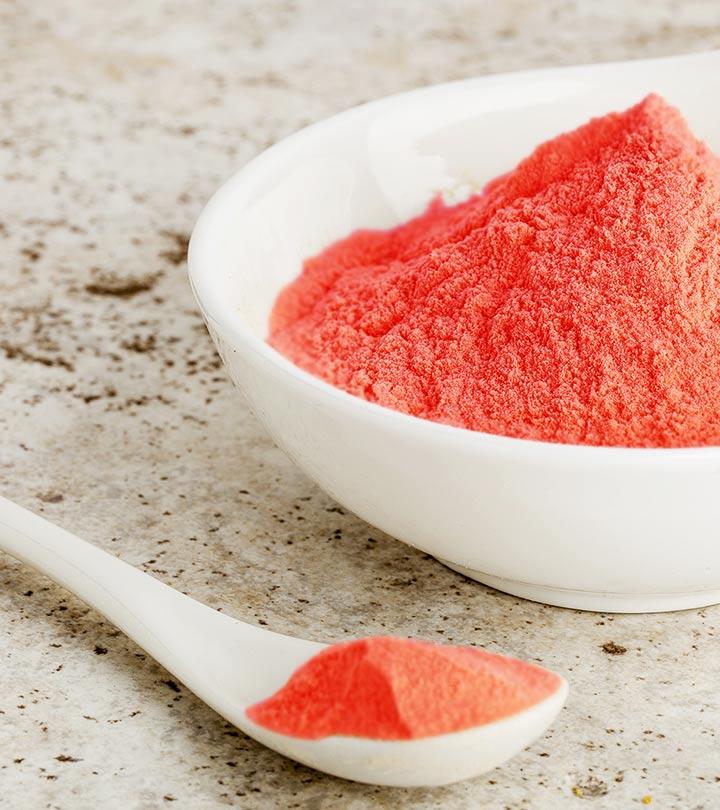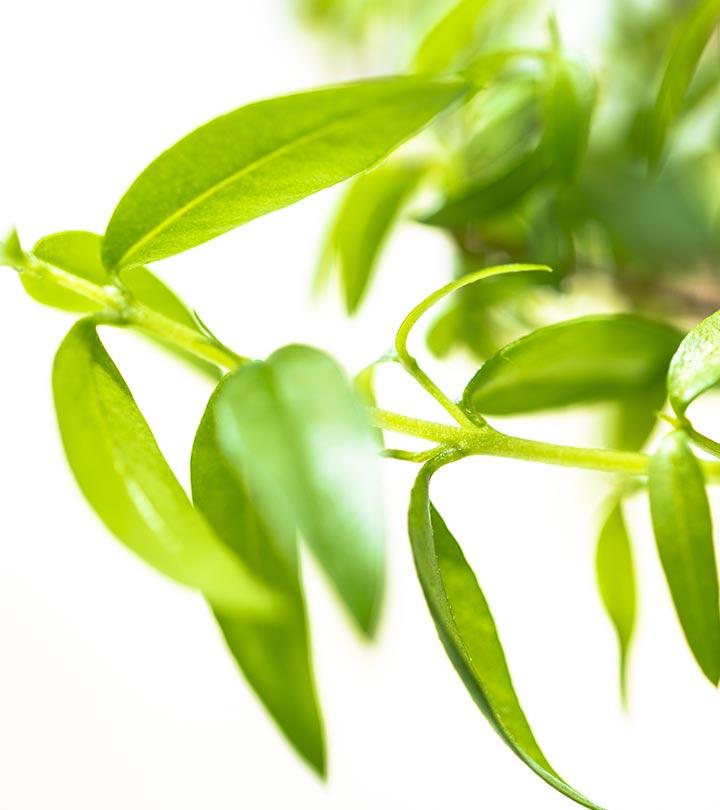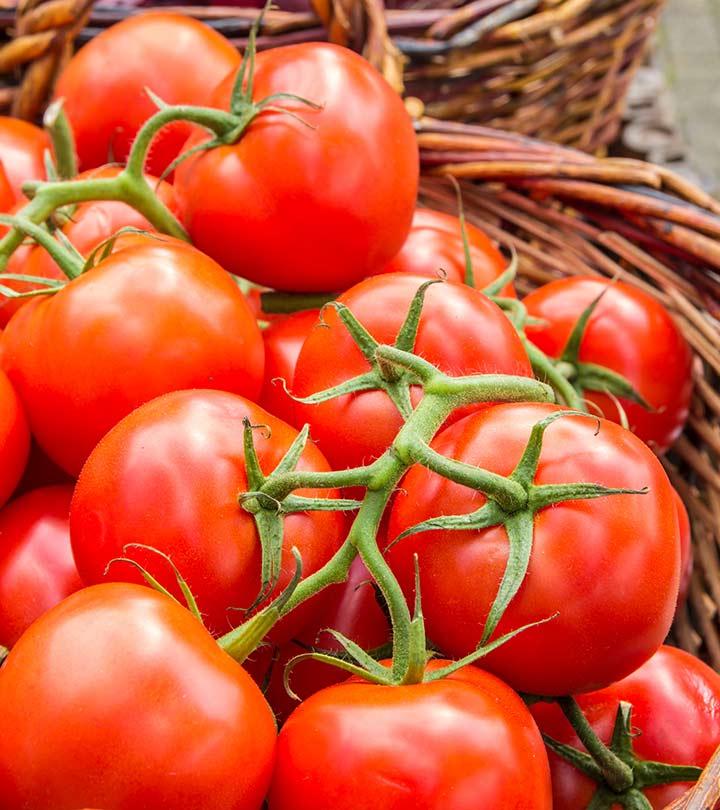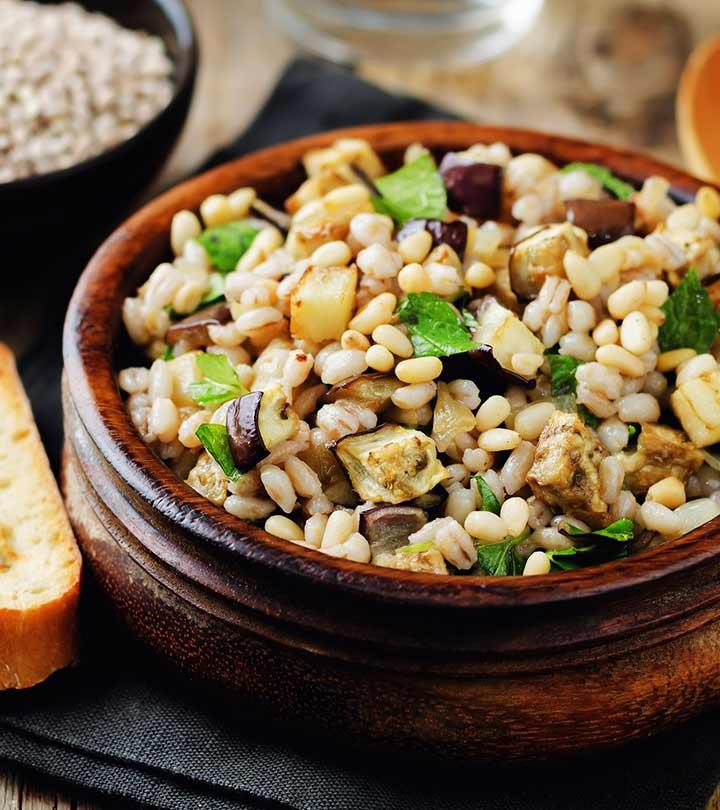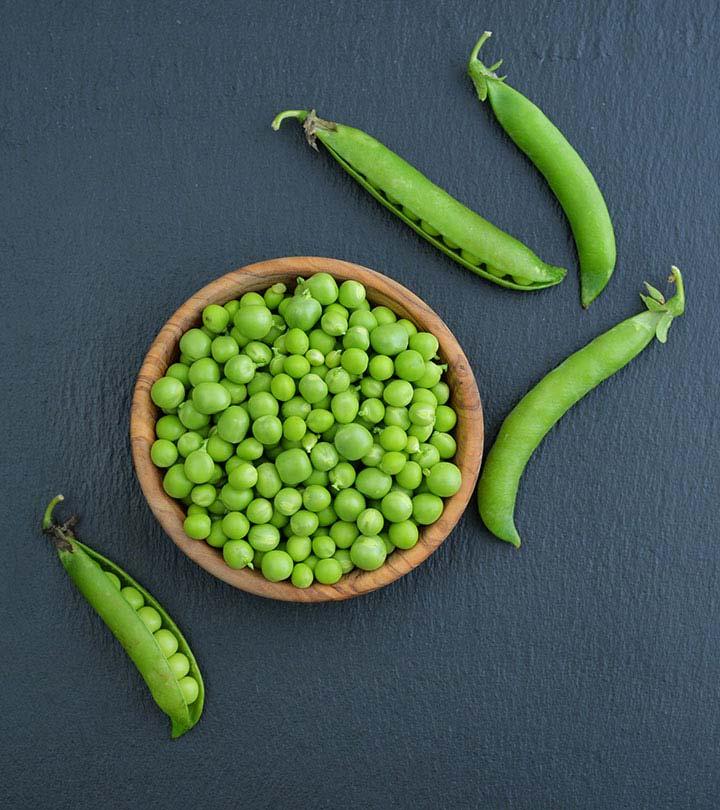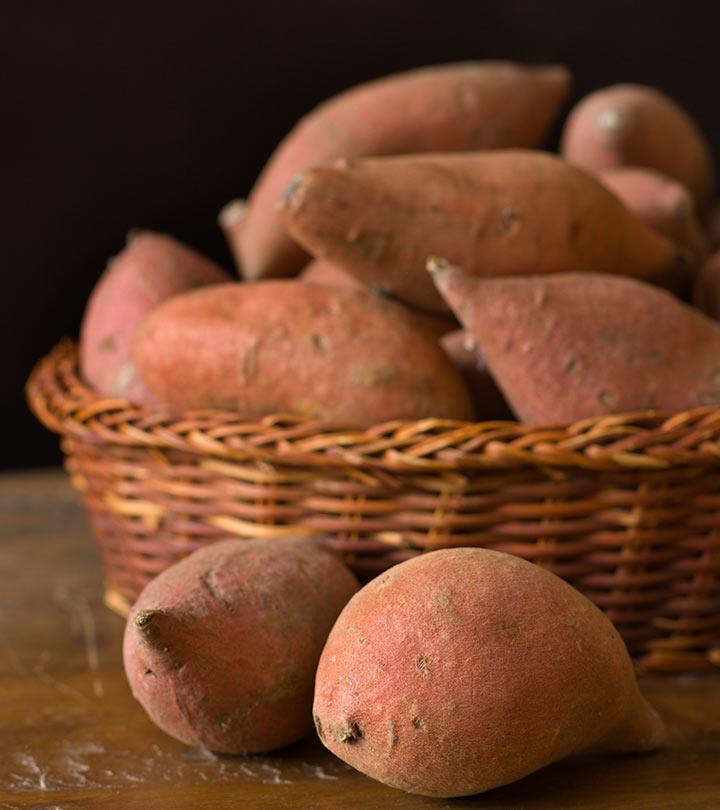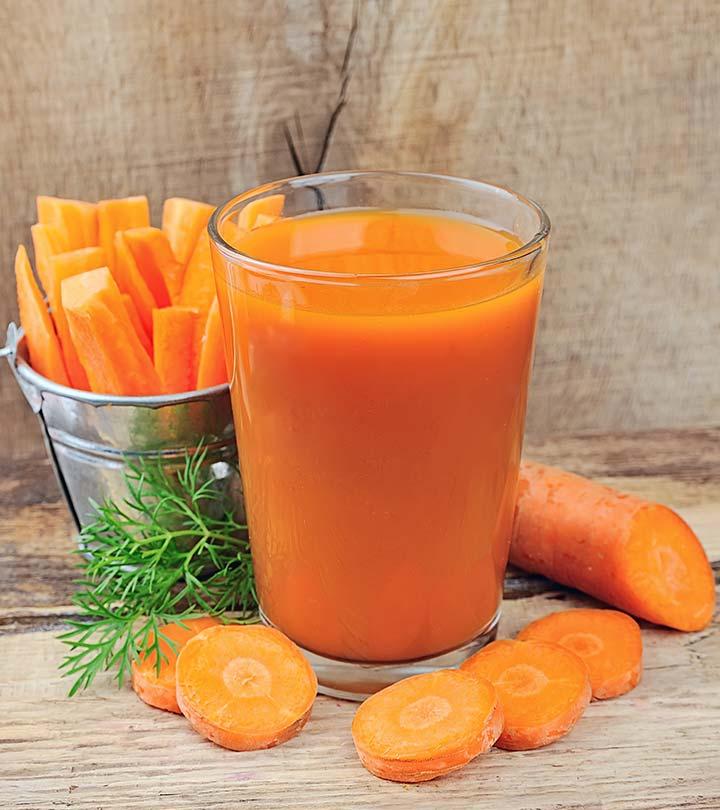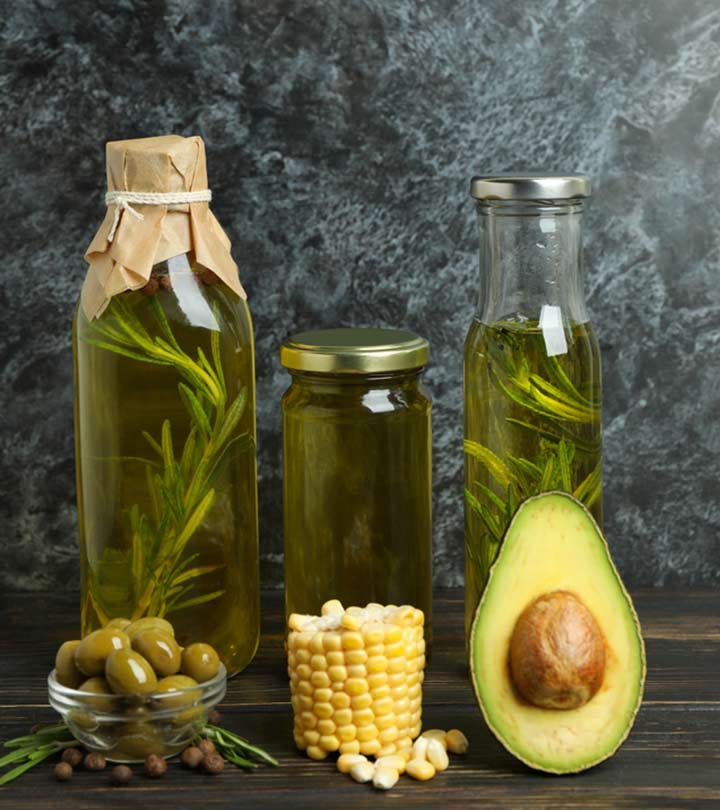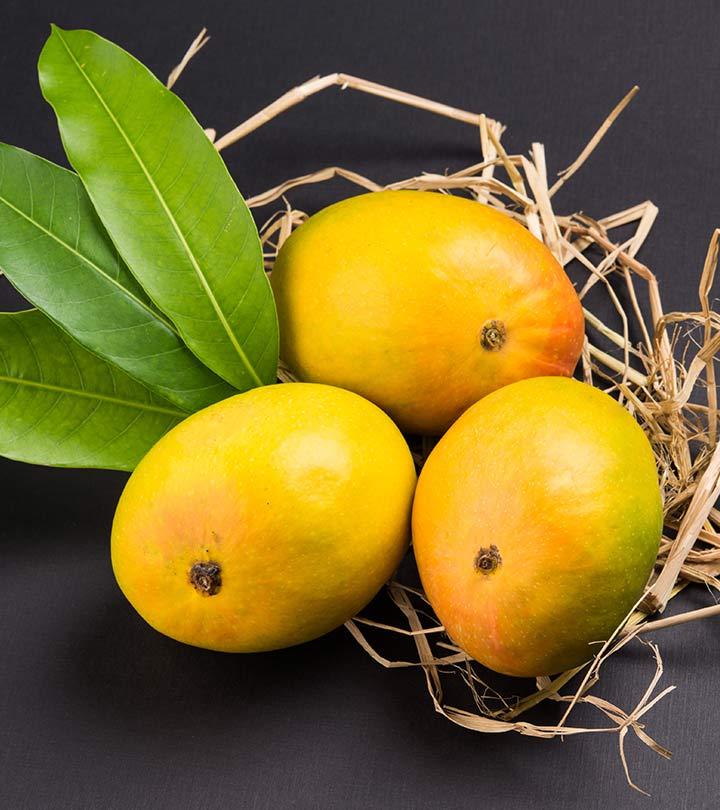What Is Kohlrabi: Nutrition, Benefits, and Uses
Learn why and how you should include this cruciferous vegetable in your diet.
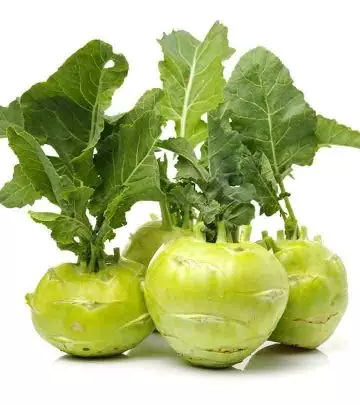
Image: Shutterstock
Kohlrabi is a cruciferous vegetable that resembles a turnip. It is replete with important nutrients and has numerous health benefits. It may help with diabetes treatment and boost immune health, among others. In this article, we understand the health benefits of kohlrabi, its nutrition profile, and a few delicious recipes you can try. Take a look!
In This Article
What Is Kohlrabi
Kohlrabi is also known as a German turnip. It is a biennial vegetable (takes 2 years to complete its biological cycle). It is a low, stout cultivar of wild cabbage. It is scientifically known as Brassica oleracea var. gongylodes L. The edible part of kohlrabi is the swollen stem.
 Trivia
TriviaKohlrabi is believed to have originated in Northern Europe. It generally grows in the spring or fall, and is usually consumed in early spring for its fresh and flavorful greens. A study found that kohlrabi is rich in anthocyanins. These compounds are found to have many beneficial effects on human health. Continue reading to know more about the health benefits of kohlrabi.
Health Benefits Of Kohlrabi
1. May Help Manage Diabetes
As discussed, kohlrabi is rich in anthocyanins. A study found that anthocyanins of plant origin may help manage diabetes and other metabolic diseases. These compounds inhibit the activity of many enzymes and help regulate glucose levels in the body.
2. May Help Manage Obesity
Kohlrabi is rich in phytochemicals like glucosinolates and carotenoids. A study found that these compounds may help control lipid (or fat) accumulation and potentially help manage obesity. These findings suggest that kohlrabi can be an excellent addition to anti-obesity diets since it is low in the glycemic food index and its regular consumption has many positive effects.
3. May Help Boost Immunity
Research suggests that kohlrabi is rich in vitamin C. The nutrient plays a crucial role in promoting immunity. Studies have shown multiple benefits of vitamin C on overall health and immunity. Including kohlrabi in your diet helps you meet the daily recommended values of vitamin C naturally. You can add kohlrabi to salads or use it to garnish various foods.
4. May Improve Skin Health
As discussed, kohlrabi is rich in vitamin C. Research shows that vitamin C has many beneficial effects for skin. It can promote skin hydration, prevent photoaging, protect skin against UV radiation, and also play a role in collagen biosynthesis. Regular consumption of kohlrabi can have several positive effects on skin health.
5. May Promote Cardiovascular Health
The higher anthocyanin content of kohlrabi has a role to play here. Research shows that a higher intake of anthocyanin can reduce the risk of myocardial infarction (a heart attack). In another study, regular intake of anthocyanin was linked to reduced arterial stiffness in women. These results indicate that kohlrabi can promote heart health and reduce the risk of various cardiovascular issues.
6. May Lower C-Reactive Protein Levels
Kohlrabi, rich in antioxidants and anti-inflammatory compounds, may contribute to lowering C-Reactive Protein (CRP) levels. CRP is a marker of inflammation in the body. Research on murine subjects has indicated that consuming kohlrabi may help reduce inflammation. However, more human studies and clinical trials are required to ascertain the potential benefits of this vegetable in the long run.
7. May Improve Digestion
Kohlrabi is rich in dietary fiber which aids digestion. Research has shown that dietary fiber plays a crucial role in the functioning of gut microbiota which, along with enzymes that assist in breaking down food efficiently, is ultimately responsible for regular bowel movements and one’s overall health.
These are the few important benefits of kohlrabi. In the following section, we will look at its nutritional profile.
Kohlrabi Nutrition Facts
One cup (135 grams) of raw kohlrabi contains:
- Calories: 36
- Carbs: 8 grams
- Fiber: 5 grams
- Protein: 2 grams
- Vitamin C: 83 mg
- Potassium: 472 mg
- Magnesium: 26 mg
- Manganese: 0.188 mg
What Does Kohlrabi Taste Like?
Kohlrabi comes in two varieties – green and purple. They resemble turnips and taste slightly sweeter when eaten raw. They taste similar to broccoli stems and cabbage, though their flavor is mild. They taste slightly bland when eaten cooked.
 Quick Tip
Quick TipIncluding kohlrabi in your diet is simple. Try out the following recipes.
Healthy Kohlrabi Recipes To Try
1. Roasted Kohlrabi
What You Need
- 1 small kohlrabi (green or purple)
- 3 tablespoons of olive oil
- 1 teaspoon of salt
- ½ a tablespoon of black pepper powder
- Chopped cilantro
Method
- Peel the kohlrabi and slice it into medium pieces.
- Toss the pieces with oil to coat them lightly.
- Season with some salt and pepper.
- Heat the oven to 425 degrees.
- Lay the kohlrabi pieces on a baking sheet in a single layer and bake until lightly browned, for 15 to 20 minutes. Turn them once or twice to ensure they brown fairly evenly.
- Remove and garnish with the finely chopped cilantro.
David, a blogger, has shared his experience of cooking kohlrabi in a blog post. He made roasted kohlrabi, and said, “They were delicious. Delicate, tender, and the bit of char from the oven added great flavor (i).”
2. Kohlrabi Carrot Salad
What You Need
- 1 small kohlrabi
- 1 medium carrot
- 2 teaspoons of olive oil
- 1 teaspoon of salt
- ½ a teaspoon of pepper
- 2 teaspoons of lemon juice
- Finely chopped cilantro
Method
- Slice the kohlrabi into medium-sized pieces and chop them finely.
- Peel the carrot and chop evenly.
- Transfer into a mixing bowl.
- Add 2 teaspoons of olive oil and coat the pieces gently.
- Add 1 teaspoon of salt and ½ a teaspoon of pepper and mix.
- Sprinkle lemon juice and garnish with chopped cilantro.
- Consume immediately without storing.
3. Creamy Kohlrabi soup
What You Need
- 1 small kohlrabi
- 1 medium onion
- ½ a cup of fresh cream
- 100 grams of butter
- 1 teaspoon of salt
- ½ a teaspoon of white pepper
- ¼ teaspoon of nutmeg powder
- 500 ml water
Method
- Cut the kohlrabi into small pieces.
- Add butter to a thick-bottomed pan and allow it to melt.
- Add finely chopped onion and fry until translucent.
- Add the kohlrabi pieces and mix gently.
- Add salt, white pepper, and nutmeg powder. Mix.
- Cover with a lid for 2 mins and let it simmer.
- Add the water and allow the mixture to cook for 20 minutes on a low flame.
- Keep the mixture on low flame for 2 minutes and mix.
- Blend the mixture in a blender into a smooth paste. Add fresh cream.
- Turn off the blender and garnish with fried kohlrabi pieces and cilantro.
How To Store
Always choose kohlrabi that is heavy and free of cracks. The greens, if attached, should be dark.
Kohlrabi can be stored in a refrigerator for two weeks. Seal it in a perforated plastic bag and store it in the refrigerator. Do not freeze. The greens of kohlrabi can be chopped and stored separately in a perforated plastic bag. They can later be added to your salads or smoothies as toppings.
Who Should Avoid Kohlrabi?
Some believe that individuals with thyroid issues should limit their intake of cruciferous vegetables. However, research is limited and much of the information is mixed in this regard.
It is also believed that cruciferous vegetables may induce bloating and abdominal discomfort. One may also experience flatulence, though the exact mechanism remains unclear. Consult your doctor about kohlrabi intake if you have thyroid issues or experience any abdominal discomfort.
Kohlrabi is a turnip-like nutrient-dense vegetable that is commonly used in salads and other savory dishes. It is loaded with beneficial nutrients, antioxidants, vitamins, and minerals that promote good health. The benefits of kohlrabi range from boosting immunity to improving skin health. It may also help manage diabetes and weight loss. However, consuming it in excess quantities may interfere with thyroid functioning or lead to gastrointestinal issues. If you experience any such adverse effects, stop its consumption immediately and seek medical advice.
Frequently Asked Questions
Is kohlrabi easy to digest?
Yes, kohlrabi is easy to digest. It has a decent amount of fiber that promotes digestion and gut health.
Can you eat too much kohlrabi?
Avoid overeating kohlrabi as it may trigger issues like gas, bloating, and gastrointestinal discomfort. Hence, moderate consumption is advised.
Key Takeaways
- Kohlrabi, or German turnip, looks similar to turnips and tastes like broccoli and cabbage stems.
- It is packed with nutrients such as anthocyanins and vitamin C that are good for the body.
- The health benefits of kohlrabi include aiding in managing diabetes and obesity and promoting heart health.
This video highlights the incredible health benefits of kohlrabi. Discover how this vegetable supports digestion, boosts metabolism, and provides a rich source of essential nutrients. Check out the video to know more.
References
Articles on StyleCraze are backed by verified information from peer-reviewed and academic research papers, reputed organizations, research institutions, and medical associations to ensure accuracy and relevance. Read our editorial policy to learn more.
(i) I Learned All About Kohlrabi and Then Cooked It Three Ways
https://keepitupdavid.wordpress.com/2016/08/03/kohlrabi/
References
Articles on StyleCraze are backed by verified information from peer-reviewed and academic research papers, reputed organizations, research institutions, and medical associations to ensure accuracy and relevance. Read our editorial policy to learn more.
- Identification and Characterization of Anthocyanin Biosynthesis-Related Genes in Kohlrabi
https://pubmed.ncbi.nlm.nih.gov/28965308/ - Anthocyanidins and anthocyanins: colored pigments as food
pharmaceutical ingredients - The role of anthocyanins as antidiabetic agents: from molecular mechanisms to in vivo and human studies
https://link.springer.com/article/10.1007/s13105-020-00739-z - Kohlrabi as a Source of Vitamin C
https://www.ncbi.nlm.nih.gov/labs/pmc/articles/PMC2160402/?page=1 - Vitamin C and Immune Function
https://www.ncbi.nlm.nih.gov/labs/pmc/articles/PMC5707683/ - Bioactive Compounds for Skin Health: A Review
https://www.ncbi.nlm.nih.gov/labs/pmc/articles/PMC7827176/ - High anthocyanin intake is associated with a reduced risk of myocardial infarction in young and middle-aged women
https://pubmed.ncbi.nlm.nih.gov/23319811/ - Higher anthocyanin intake is associated with lower arterial stiffness and central blood pressure in women
https://pubmed.ncbi.nlm.nih.gov/22914551/ - The health benefits of dietary fiber
https://www.ncbi.nlm.nih.gov/pmc/articles/PMC7589116/ - The behavior of dietary fiber in the gastrointestinal tract determines its physiological effect
https://www.tandfonline.com/doi/full/10.1080/10408398.2016.1180501






